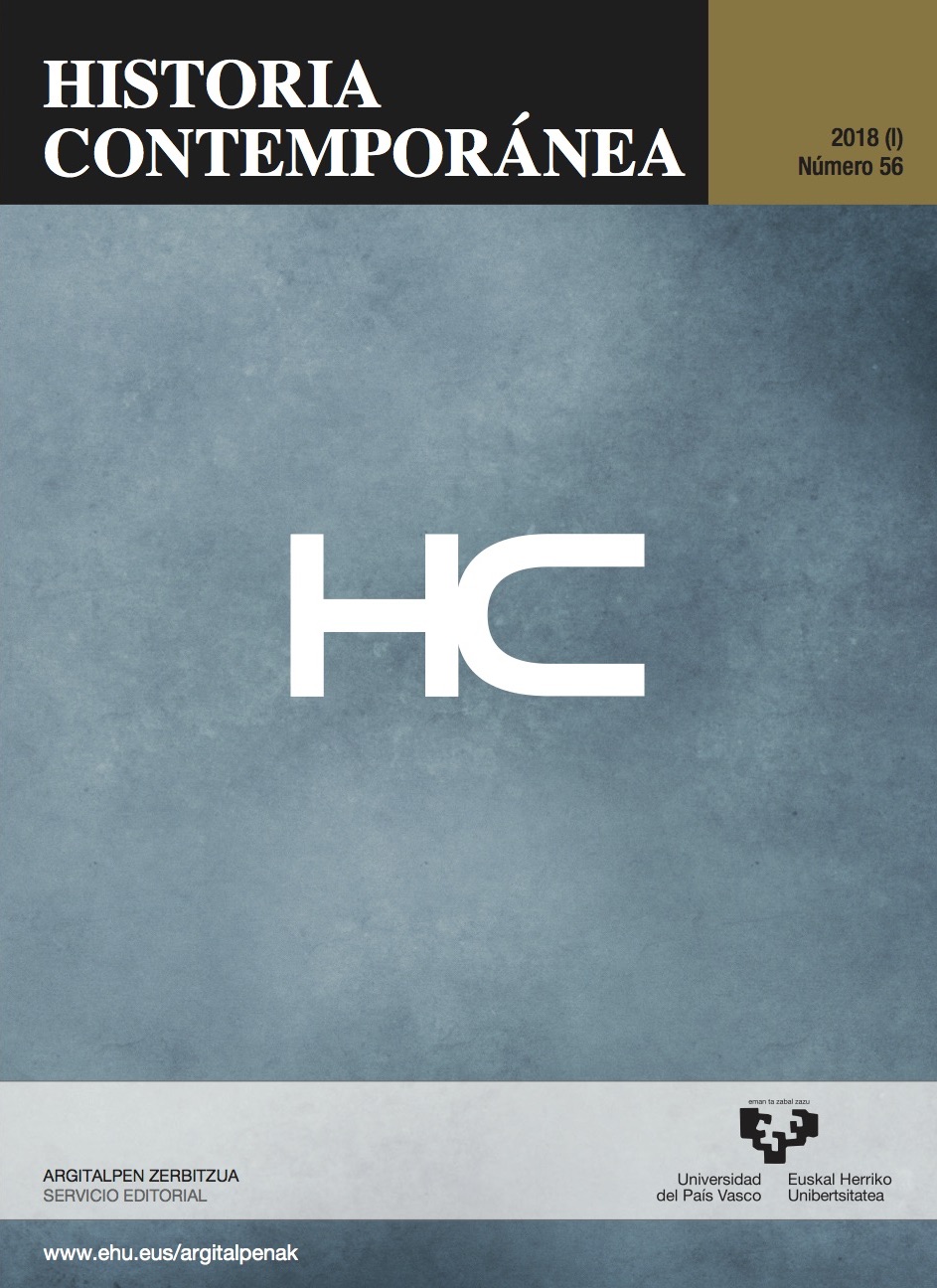Reporting ceased: The Italian press and the debate concerning the media blackout after the Red Brigades attacks
##plugins.themes.bootstrap3.article.main##
##plugins.themes.bootstrap3.article.sidebar##
Abstract
This paper carries out an analysis of the attitude of the press regarding the Red Brigades terrorist threat and the subsequent opportunity to restrict flow of information concerning the group. The terrorist group the Red Brigades used to claim responsibility for their violent actions after each attack. Over time, that information coming from a terrorist group made mass media question the morality of continuing to publish texts written by terrorists. The discussion was extremely heated on two occasions, when the Red Brigades kidnapped, on one hand, the Christian Democracy President, Aldo Moro, who was killed, and on the other hand, judge Giovanni D'Urso, who was released one month later.
##plugins.themes.bootstrap3.article.details##
Italy, Red Brigades, Terrorism, Press, Language
BANDURA, Albert, "The role of selective moral disengagement in terrorism and counterterrorism", en MOGHADDAM, Fathali y MARSELLA, Anthony, Understanding Terrorism, American Psychological Association, Washington, 2004, p. 121-150.
BENITO, Ángel "Terrorismo y medios de comunicación", en COLECTIVO MIGUEL DE UNAMUNO, Escritos sobre la tolerancia, Editorial Pablo Iglesias, 1986, pp. 117-118.
BOATTI, Giorgio: Piazza Fontana, Einaudi, Turín, 2009.
CLEMENTI, Marco, Storia delle Brigate Rosse, Odradek, Roma, 2007.
DONDI, Mirco: L'eco del boato: storia della strategia della tensione, 1965-1974, Laterza, Roma-Bari, 2015.
FERRARESI, Franco, Minacce alla democrazia. La destra e la strategia della tensione in Italia nel dopoguerra, Feltrinelli, Milano, 1995.
GALFRÉ, Monica, La guerra è finita, Laterza, Roma-Bari, 2014.
GLUCKSMANN, André, El discurso del odio, Taurus, Madrid, 2005.
GONZÁLEZ CALLEJA, Eduardo, El Laboratorio del miedo, Critica, Barcelona, 2013.
GOTOR, Miguel, Il memoriale della Repubblica, Einaudi, Torino, 2011.
GRINER, Massimiliano: Piazza Fontana e il mito della strategia della tensione, Lindau, Torino, 2011.
GROSSI, Giorgio, Rappresentanza e rappresentazione. Percorsi di analisi ell'interpretazione tras mass media e sistema politico in Italia, Franco Angeli, Milano, 1981.
MARLETTI, Carlo, "Il terrorismo moderno come strategia di comunicazione. Alcune considerazioni a partire dal caso italiano", en VILLA, Renzo, La violenza interpretata, Il Mulino, Bologna, 1979.
MASTROLILLI, Paolo y MOLINARI, Mauricio: L'Italia vista dalla Cia: 1948-2004, Laterza, Roma-Bari, 2005.
MASTROMATTEO, Gilberto, Quando i media staccano la spina, Prospettiva Editrice, Civitavecchia, 2007.
MORETTI, Mario, Brigate Rosse. Una storia italiana, Milano, Baldini&Castoldi, 2002.
Moro, Aldo, Ultimi scritti, Piemme, Casale Monferrato, 2003.
MURIALDI, Paolo, "Caso Espresso e black out: un riepilogo", en Problemi dell'informazione, Il Mulino, Bologna, n. 1, 1981.
MURIALDI, Paolo, Storia del giornalismo italiano, Torino, Gutenberg 2000, 1986.
PACINI, Giacomo (2014): Le altre Gladio: la lotta segreta anticomunista in Italia, 1943-1991, Einaudi, Turín, 2014.
PROGETTO MEMORIA, Le parole scritte, Sensibili alle foglie, Roma, 1996.
RAYNER, Hervé: "Les théories du complot dans les interpretations du terrorisme en Italie: la prégnance du pont de vue cryptologique", en Giuseppe GARGIULO y Otmar SEUL: Terrorismes : l'Italie et l'Allemagne à l'épreuve des "années de plomb", 1970-1980, M. Houdiard, París, 2008.
RIVAS NIETO, Pedro, Terrorismo y antiterrorismo en el mundo contemporáneo, Debate, Madrid, 2013.
TRANFAGLIA, Nicola: "Un capitolo del 'doppio stato': la stagione delle stragi e dei terrorismi, 1969-84", en Francesco BARBAGALLO, coord., Storia dell'Italia repubblicana, Einaudi, Turín, III-2, 1997.
VERES, Luis, "Prensa, poder y terrorismo", Amnis. Revue de Civilisation Contemporaine Europe/Amerique de l'Université de Bretagne Occidentale [en ligne], n. 4, 2004, p. 1-9.
ZAVOLI, Sergio, La notte della repubblica, Mondadori, Milano, 1992.
Authors publishing in the journal Historia Contemporánea agree to the following terms:
- Authors retain full copyright of their papers, but also grant copyright to the academic publisher (UPV/EHU Press) for the purposes of copyright management, vigilance and protection.
- Papers are by default published with a non-restrictive Creative Commons CC-BY-NC-ND 4.0. You are free to: Share, copy and redistribute the material in any medium or format. The licensor cannot revoke these freedoms as long as you follow the license terms. Under the following terms:
Attribution — You must give appropriate credit, provide a link to the license, and indicate if changes were made. You may do so in any reasonable manner, but not in any way that suggests the licensor endorses you or your use.
NonCommercial — You may not use the material for commercial purposes.
NoDerivatives — If you remix, transform, or build upon the material, you may not distribute the modified material.
No additional restrictions — You may not apply legal terms or technological measures that legally restrict others from doing anything the license permits.
- If an author requires a more restricted CC license (e.g. CC-BY-SA), this can be provided by contacting our publisher at: publications@ehu.eus
- In particular, and without having to request additional permission, CC BY-NC-ND licensed papers can be deposited in institutional repositories and academic web sites.
- Postprints (i.e. accepted but non-edited versions of the manuscript) can also be pre-published online, providing acknowledgement of authorship and source is specified as above.
For non-standard uses of papers or materials published in Historia Contemporánea, please contact our publisher UPV/EHU Press at: publications@ehu.eus


 http://orcid.org/0000-0002-1782-3746
http://orcid.org/0000-0002-1782-3746